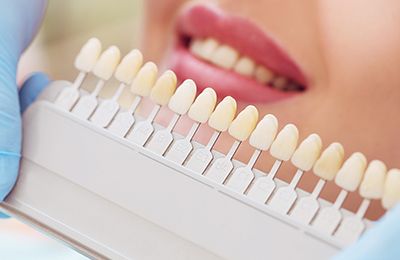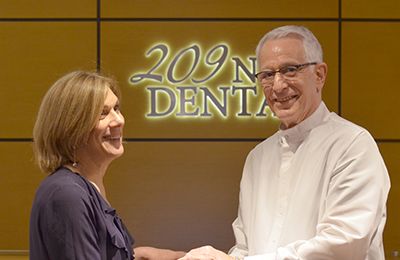Inlays And Onlays NYC

Back in the1960’s and 1970’s, if you were unlucky enough to have a lot of cavities, you ended up with “a mouth full of silver”. That’s because the “go to filling” material was silver amalgam. If you needed a crown many times it was done in gold. These materials worked well for a time but their esthetic and inherent expansion problems led dentistry to develop new and better materials. In fact this science was revolutionary. It was called adhesive, known more popularly as Cosmetic Dentistry. It was the birth of a whole new paradigm in treating decay and broken teeth. It was the beginning of the porcelain inlay and onlay in modern dentistry.
Materials That Preceded Porcelain Inlays And Onlays
- Silver Amalgam: The silver was combined with mercury to form a compound that filled cavities. There was talk that the mercury could be injurious to the health of the patient but this proved to be false. Fillings lasted a long time but were unsightly and eventually cracked due to difference in coefficient of expansion with tooth structure.
- Gold Crowns: These lasted a very long time and were coefficient of expansion much closer to that of the tooth. In later years gold became very expensive.
- Composite Resins: These were tooth colored, completed in one visit, and relatively inexpensive. Composite resins were very good for filling a cavity that is surrounded by tooth structure. If more than one tooth is missing, they do not hold up as well.
Porcelain Inlays And Onlays
- Used in single tooth restorations
- Very esthetic because tooth color matches beautifully
- Inlays and onlays fit precisely
- Contact points are excellent
- Inlays and onlays last 50% longer than composite resins
- Can restore large defects in teeth without having to make crowns
- Perserves original tooth structure as there is no need to prepare the entire tooth. This is one of the big advantages over a crown.
Differences And Similarities Between Inlays And Onlays
- Both are used in single tooth restorations (they cannot be joined from tooth to tooth like a crown).
- Both are composed of porcelain (Emax, Zirconia).
- Inlays fit inside the tooth and they do not involve the cusp of the teeth. The defect that inlays restore is smaller than a defect that needs an onlay or a crown. At 209 NYC Dental, we seldom use inlays. We find that composite resins serve well for the small to medium defects.
- Onlays fit inside the tooth and restore larger defects that involve the cusps of the tooth. Onlays are one of our favorite restorations. 209 NYC Dental believes in treating patients in the most predictable, conservative, and cosmetic fashion possible. Onlays allow us to maintain much of the original tooth structure. Many times, if we would not do an onlay, it isn’t a composite that would be an alternative choice, it would be a crown. A crown or cap is made of the same porcelain as the onlay. The difference is that the crown covers the entire tooth.
What About Teeth That Are So Broken That They Cannot Be Restored With Onlays?
- Possibility of root canal therapy
- Possibility of core build ups
- Possibility of crowns
- Possibility of extraction
- Possibility of implant restoration
209 NYC Dental
209 NYC Dental has a century-long commitment to treating our patients at the highest possible level. We are a multispecialty practice. Whatever your dental needs are, we are experts in solving problems and preempting disease. Our treatments are specifically designed for you. Whether you need an onlay, a crown, or a simple checkup and cleaning, you will leave our office with a healthy, happy smile. Call us today at 212-355-2290.
 Our History
Our History
 Our Providers
Our Providers
 About Us
About Us
 Blog
Blog
 Contact us
Contact us
 Diagnostic & Preventive
Diagnostic & Preventive
 Implant Dentistry
Implant Dentistry
 Clear Braces - Invisalign
Clear Braces - Invisalign
 Cosmetic Dentistry
Cosmetic Dentistry
 Periodontics
Periodontics
 Patient Forms
Patient Forms
 Payment Information
Payment Information
 Insurance Options
Insurance Options
 CareCredit Dental
CareCredit Dental
 Appointment Policy
Appointment Policy
 Free Consultation
Free Consultation
 Complimentary Teeth Whitening
Complimentary Teeth Whitening
 Teeth Whitening
Teeth Whitening



